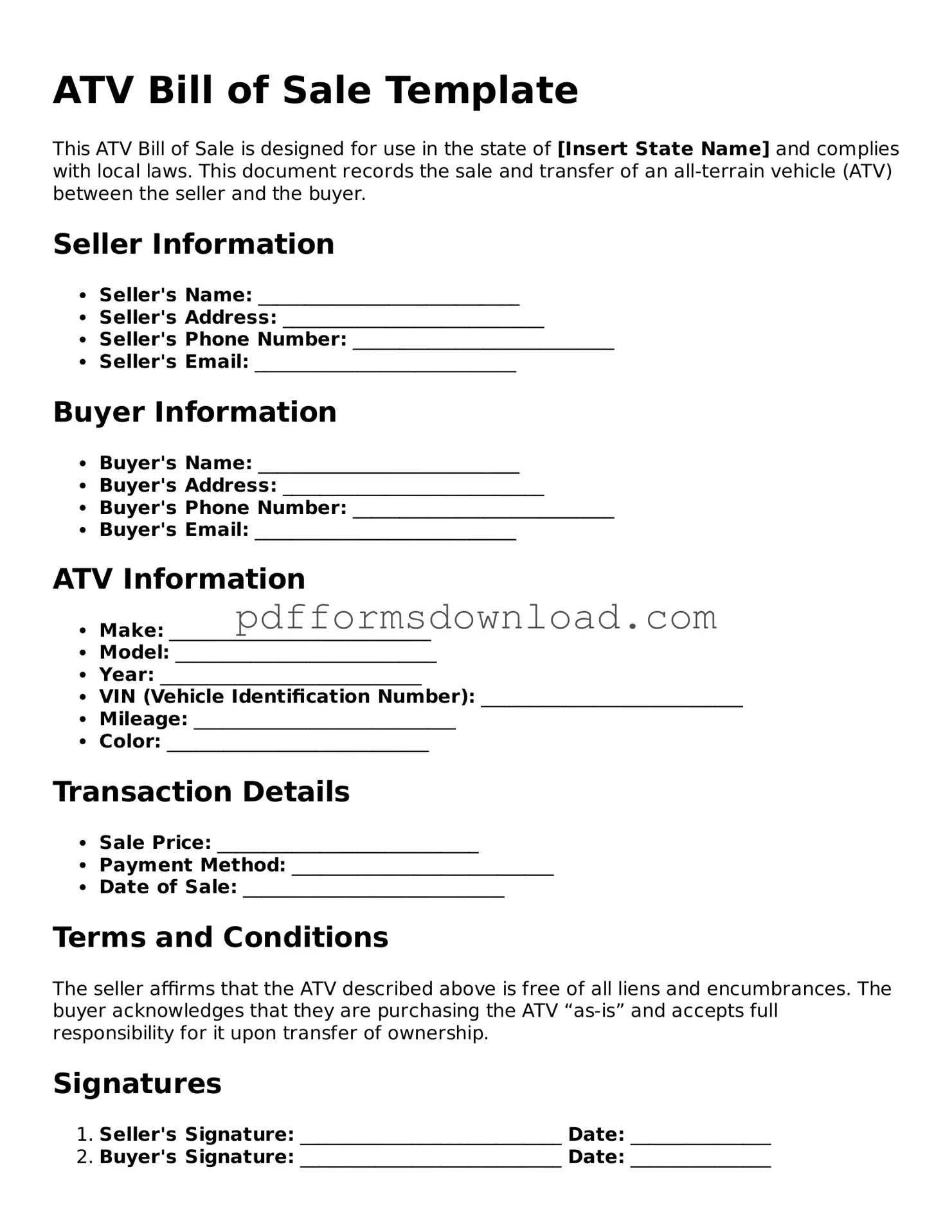An ATV Bill of Sale is a legal document that records the sale and transfer of ownership of an all-terrain vehicle (ATV). This document serves as proof of the transaction between the buyer and the seller. It includes important details about the ATV, the parties involved, and the terms of the sale.
What information should be included in an ATV Bill of Sale?
The ATV Bill of Sale should include the following information: the names and addresses of the buyer and seller, the date of the sale, a description of the ATV (including make, model, year, and Vehicle Identification Number or VIN), the sale price, and any terms or conditions of the sale. Both parties should sign and date the document.
Is the ATV Bill of Sale legally binding?
Yes, an ATV Bill of Sale is a legally binding document once both parties sign it. It indicates that the buyer has purchased the ATV and that the seller has received payment. However, it’s important to ensure that all information is accurate and that both parties understand the terms before signing.
Do I need to have the ATV Bill of Sale notarized?
Notarization is not always required for an ATV Bill of Sale, but it can add an extra layer of security. Some states may require notarization for the document to be valid. Check your state’s regulations to determine if notarization is necessary.
Can I create my own ATV Bill of Sale?
Yes, you can create your own ATV Bill of Sale. However, it’s important to ensure that it includes all the necessary information and complies with your state’s requirements. Many templates are available online, which can help guide you in drafting a comprehensive document.
What if I lose my ATV Bill of Sale?
If you lose your ATV Bill of Sale, you can create a new one if you have the necessary information. Both the buyer and seller should sign the new document to confirm the transaction. Keeping a copy of the Bill of Sale in a safe place is advisable to avoid future issues.
Can I use an ATV Bill of Sale for other vehicles?
An ATV Bill of Sale is specifically designed for all-terrain vehicles. While some elements may be similar, it’s best to use the appropriate Bill of Sale for each type of vehicle, such as a motorcycle, car, or boat. Each type may have different requirements and information needed.
Where do I file the ATV Bill of Sale?
You typically do not need to file the ATV Bill of Sale with any government agency. However, both the buyer and seller should keep a copy for their records. The buyer may need to present the Bill of Sale when registering the ATV with their state’s Department of Motor Vehicles (DMV) or equivalent agency.
